Best Ropeways in India 2025 | Scenic Rides With the Best Mountain Views
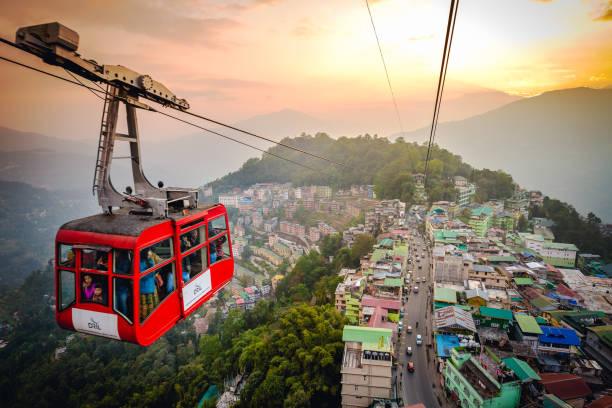
Ropeways in India and cable cars have become one of the fastest-growing ways to experience India’s mountain landscapes: short enough for a day visit, dramatic enough to feel like an expedition. In 2025, India’s ropeways range from long, high-altitude gondolas that span several kilometres to short scenic links that lift visitors out of valleys for panoramic views. This guide visits five of the country’s most talked-about ropeways and explains what makes each special, gives practical tips, and suggests the best seasons and photo windows for every ride.
In this Blog
Why ride a ropeway in India in 2025?
Ropeways in India do three things at once: they solve access (steep slopes become trivial), amplify views (the aerial angle is unbeatable for mountain photography), and add an experience – a fourteen-minute glide can be the highlight of a trip. Recent investments and upgrades under India’s National Ropeways Development Programme mean better safety standards, modern gondolas, and a wave of new projects – from tourist-friendly links to major pilgrimage connectors – making 2025 a strong year for aerial sightseeing.
1. Solang Valley (Manali) – Winter panoramas and alpine greenlands
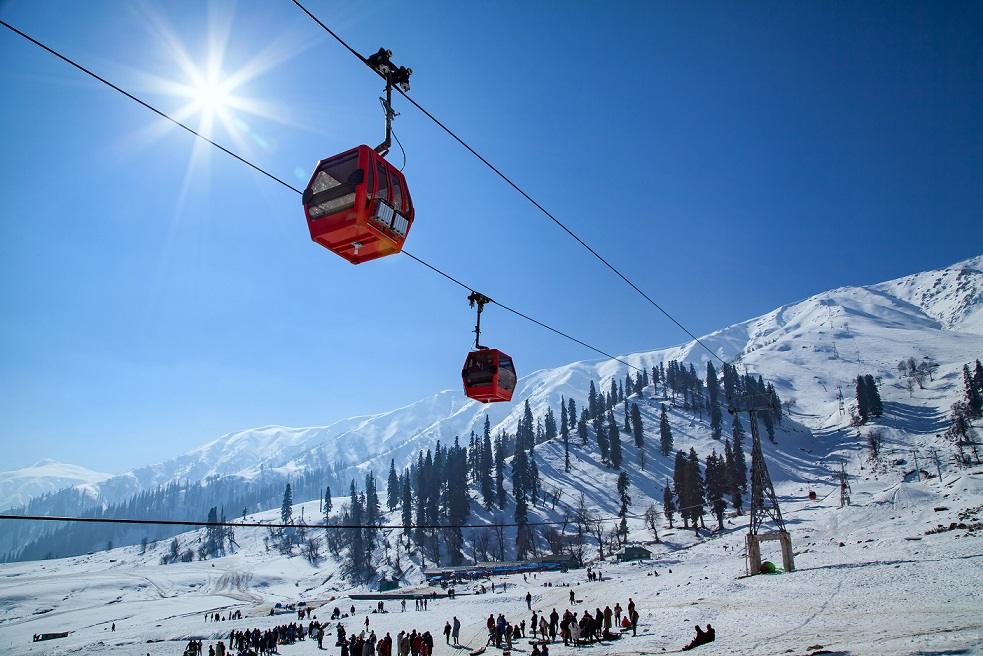
Why go: Solang’s cable car is the easiest way to ascend above the valley floor for unobstructed views of the Pir Panjal and the Kullu valley. The ride gives a strong seasonal contrast – white, crystalline panoramas in winter and lush, tea-green slopes and streams in summer.
What to expect: The Solang ropeway is a fairly short gondola ride that takes riders from the valley up toward higher slopes used for snow sports and paragliding launch areas. The trip is popular with families and adventure travellers alike and is often combined with skiing, snow tubing, or paragliding packages. Expect a busy queue in peak months (Dec–Feb for snow; May–June for summer weekends).
Tips:
- Best light: Late afternoon in winter for low-angle sunlight on the snow; early morning in summer for cleaner air.
- Tickets & timing: Ticket counters and private tour operators sell fixed-price rides – check local operators for current fares and whether you can reserve a cabin to avoid queues.
- Safety & gear: The cabin is enclosed; bring warm layers in winter and a windproof jacket even in summer.
Why it stands out: Solang’s ropeway is often chosen by first-time mountain cable-car riders because it pairs a comfortable ride with immediate access to adventure-sports options.
2. Pelling (Sikkim) – Himalayan panoramas with local flavour
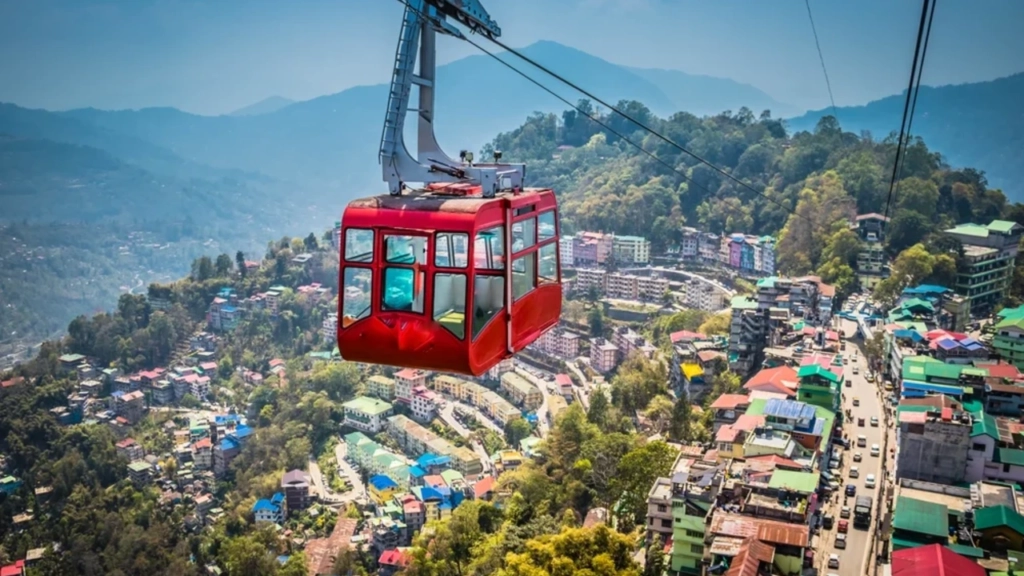
Why go: Pelling’s ropeway (and skywalk attractions nearby) provide a classic Himalayan vantage point over the Kanchenjunga range on clear days. While Pelling is more known for temples and skywalks, the area’s ropeway offerings have become a popular short excursion for travellers based in Gangtok or Darjeeling-bound circuits.
What to expect: The Pelling ropeway delivers sweeping views across valleys and terraced slopes, and it often links visitors directly to skywalk points and viewpoints. Infrastructure and ticketing can be variable – some newer installations are privately run and marketed locally, so it’s sensible to check recent traveller reports before planning. Trip reports and recent visitor videos show the route offering clean, elevated views and a relatively short ride suitable for families.
Tips:
- Best days: Choose clear, wind-still days – mountain haze can obscure even dramatic ranges.
- Combine it: Link the ride with a visit to the nearby Chenrezig statue, Pemayangtse Monastery, or the glass skywalk for a full-day Pelling loop.
- Expect queues in peak season (spring–autumn).
Why it stands out: Pelling is less crowded than larger Himalayan centres; the ropeway adds a fresh perspective to a classic Sikkim itinerary.
3. Rajgir (Bihar) – Culture, history, and a surprisingly scenic ascent
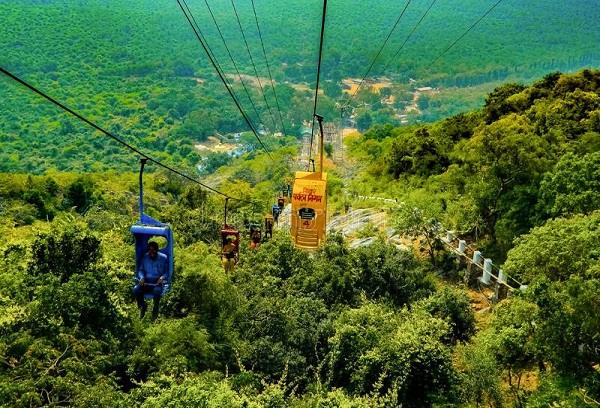
Why go: Rajgir’s ropeway is a different sort of mountain ride: it takes pilgrims and sightseers up Ratnagiri Hill to the Vishwa Shanti Stupa (Peace Pagoda) and provides a wide-view shot of the ancient Nalanda region’s rounded hills. The ropeway is an efficient way to reach the stupa without a forest walk or vehicle access, and the aerial view frames Rajgir’s unusual bowl of hills beautifully.
What to expect: Short but scenic, the Rajgir ropeway caters heavily to visitors interested in religion and history. The channel connects base stations with the Hilltop Stupa and offers a bird’s-eye perspective of meadows, temple clusters, and the surrounding low hills. State tourism pages and popular travel portals list timings (daylight hours) and note that the ropeway in India runs year-round, though early-morning slots are best to avoid crowds.
Tips:
- Best for culture + photos: Early morning to capture soft light on the stupa and fewer people on the plaza.
- Wear comfortable shoes: Once at the top, there are steps and walkways around the stupa and viewpoints.
- Combine with: Nalanda ruins and Venu Vana for a historical day.
Why it stands out: Rajgir shows that ropeways are not only for dramatic alpine skylines – they can also improve access to cultural sites and add a photogenic aerial angle to heritage tourism.
4. Parwanoo / Timber Trail (Himachal) – Curated resort transfer and classic Himalayan swoop
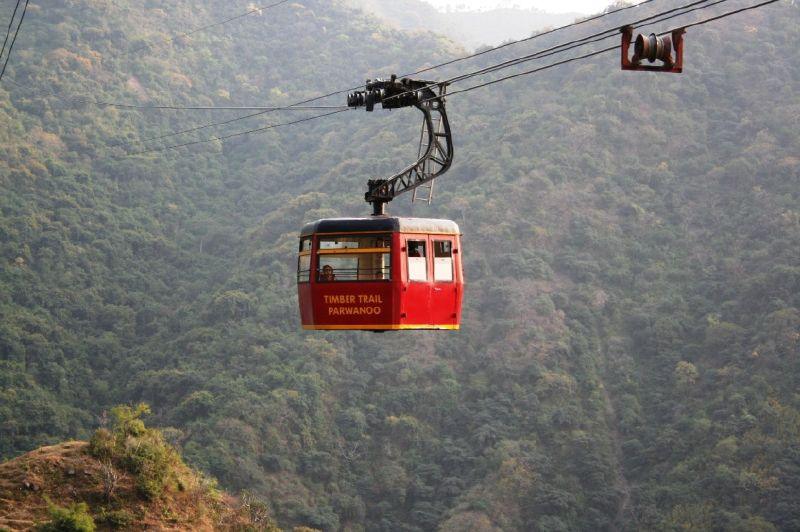
Why go: Timber Trail’s cable car in Parwanoo doubles as a resort transfer and a scenic experience, lifting guests from the highway corridor up to mountain lodges and terraces. The company has built a tourism product around the cable car, combining accommodation and the aerial ride into a single package – a neat option for a quick mountain escape from Delhi–Chandigarh.
What to expect: A well-maintained, resort-oriented cable car experience: the Timber Trail link shuttles visitors between the valley base and a cluster of hilltop hotels. The ride is scenic rather than alpine – you get long views of the Shivalik ranges, tea slopes, and rippling valleys. Timber Trail operates a regular schedule and often bundles transfers with stays at their properties.
Practical Tips:
- Best time: Spring through autumn for green views and mild temperatures; avoid monsoon peak rainfall days for a smoother ride.
- Booking: Staying on-site at Timber Trail hotels often includes cable-car transfers; day riders should check return schedules.
- Photo angle: Sit on the side facing outward toward the broader valley for unbroken vistas.
Why it stands out: Timber Trail shows how ropeways can be integrated into hospitality – the ride becomes both transfer and attraction.
5. Auli (Joshimath–Auli) – The long alpine gondola with big-mountain drama

Why go: The Auli (Joshimath–Auli) ropeway is one of India’s longest and most dramatic – a true alpine gondola that carries passengers high across deep valleys toward skiing slopes and sweeping Himalayan horizons. The full span and the altitude gain put it in the same conversation as Asia’s notable mountain gondolas.
What to expect: The Joshimath–Auli ropeway covers roughly four kilometres and delivers sustained, wide-angle views across snowfields and peaks (on clear days you can sight high summits like Nanda Devi in the distance). The ride takes approximately 20–25 minutes end-to-end and is often used by skiers and hikers in winter and spring. Because the ropeway covers high terrain, weather matters – it may close in high winds or heavy snowfall. There have also been upgrades and reconstruction efforts in recent years, so itineraries should confirm current operational status before travel.
Practical tips:
- Best window: Late November–March for skiing and snow vistas; April–June for clear skies and alpine meadows.
- Time & tickets: Allow at least half a day if you’re combining the ride with skiing or short treks; book tickets where possible to avoid wait times.
- Accessibility: The gondola makes steep terrain accessible to non-trekkers, transforming what would be a strenuous climb into a scenic glide.
Why it stands out: Auli’s ropeway feels like the “big” Himalayan cable-car experience in India – long, high, and cinematic.
Where to Stay
The Stargazer

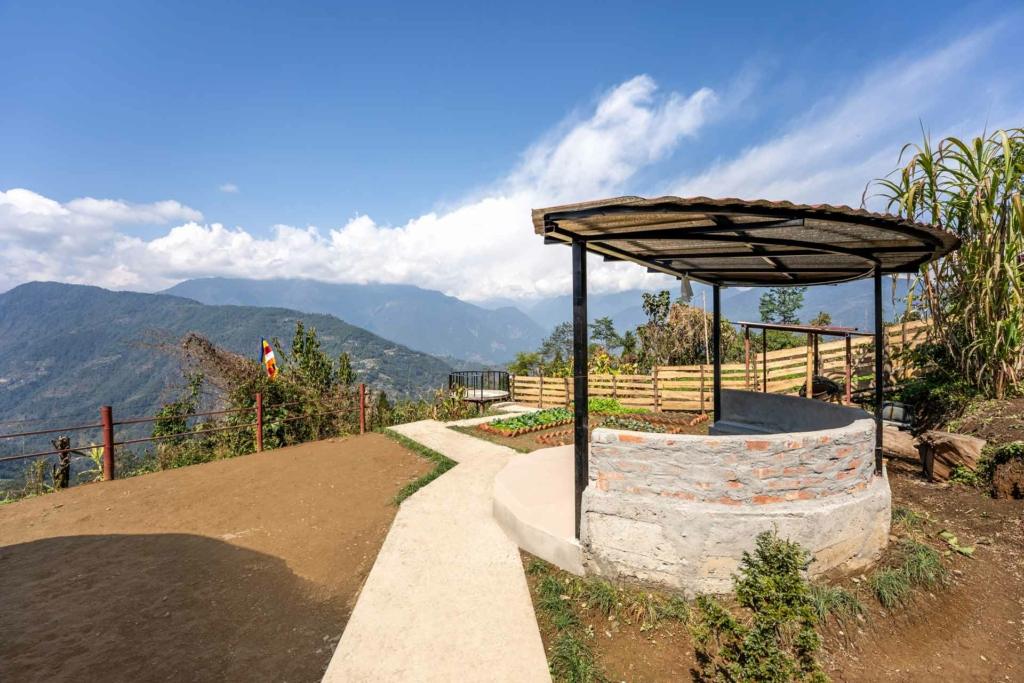

Casa Bella Vista
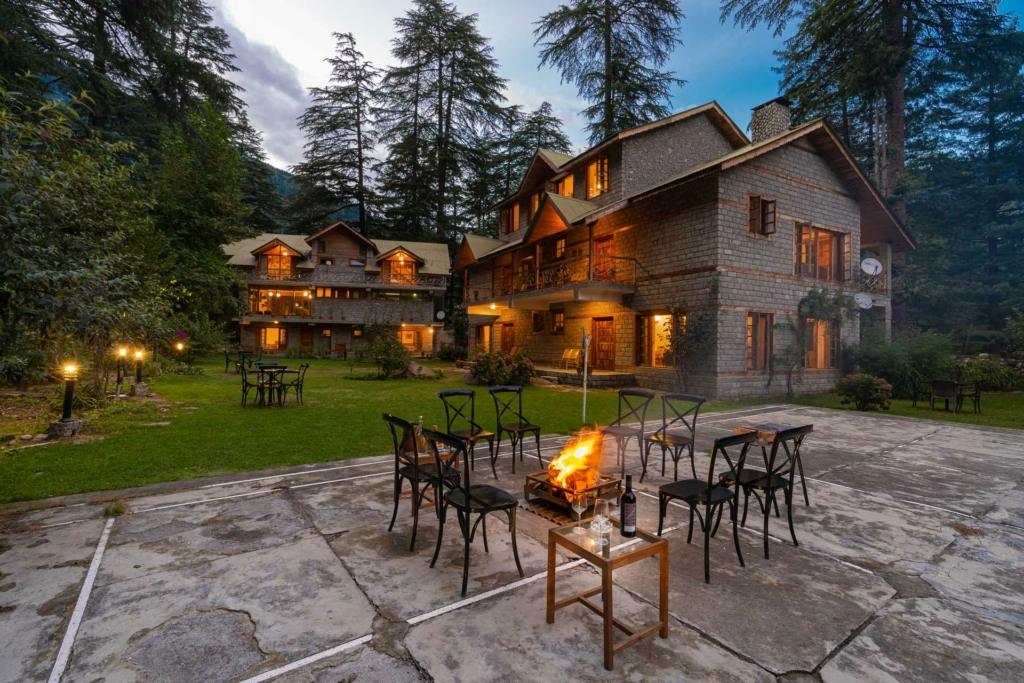
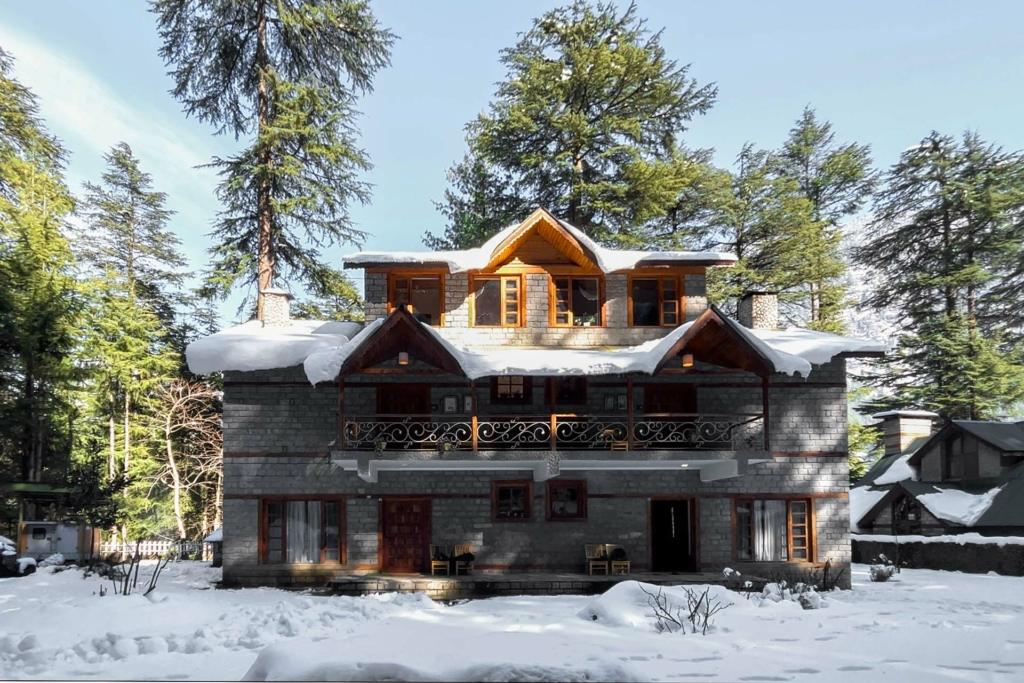
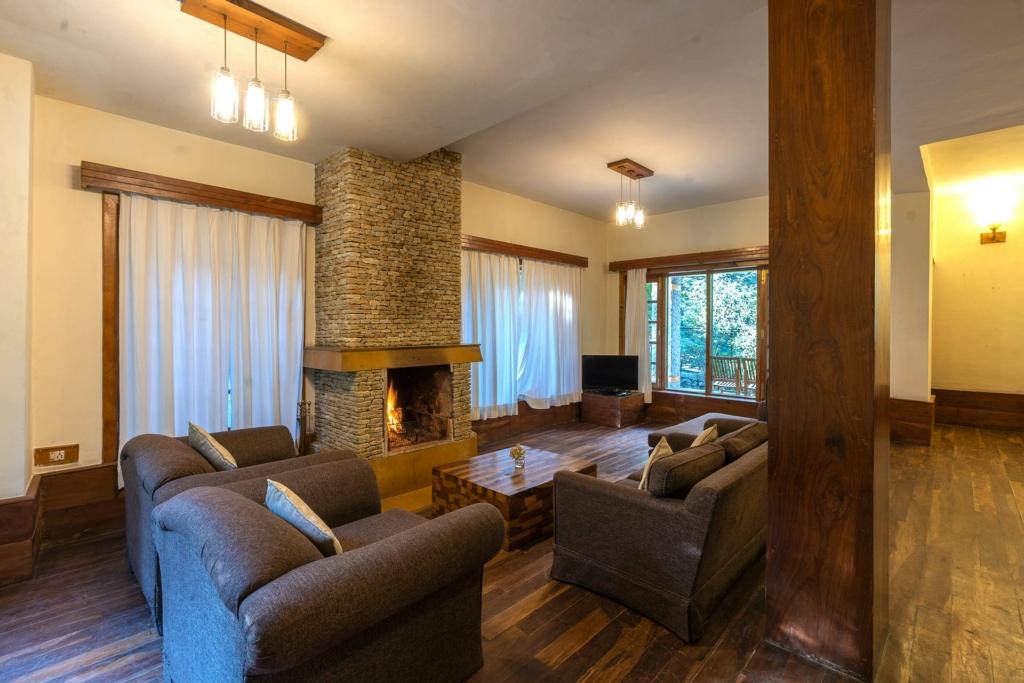
Johnson Studios
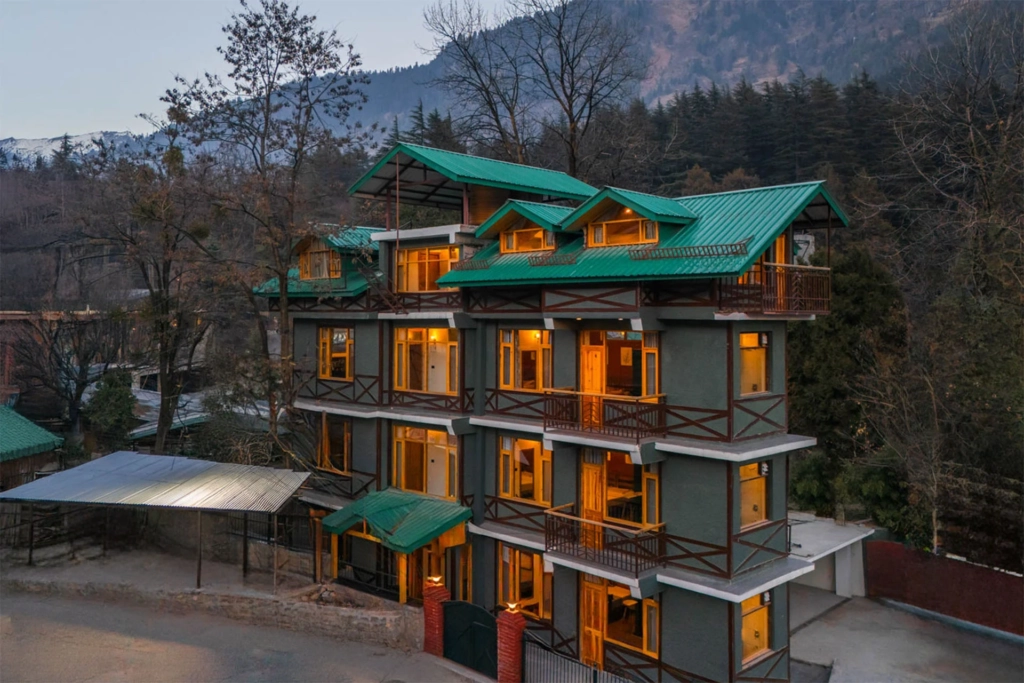
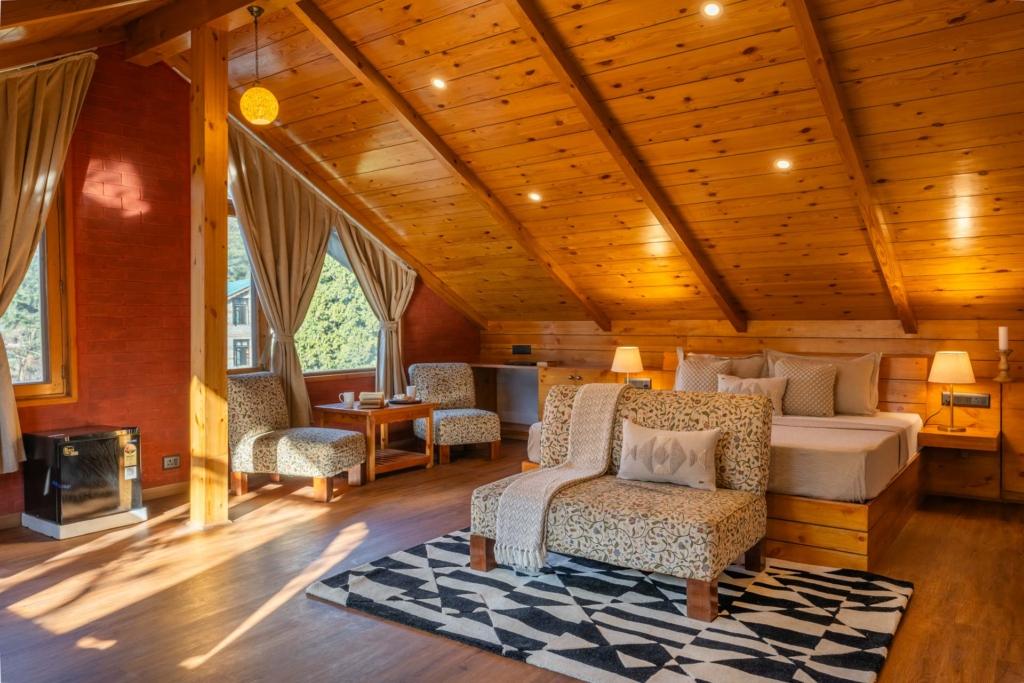
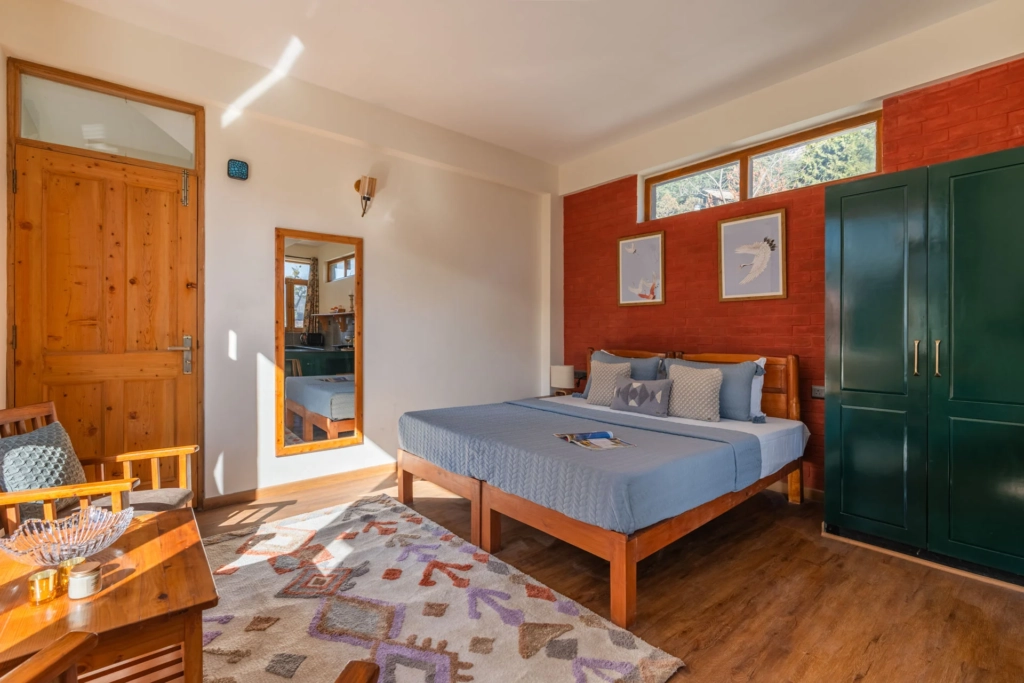
The Kathguni House

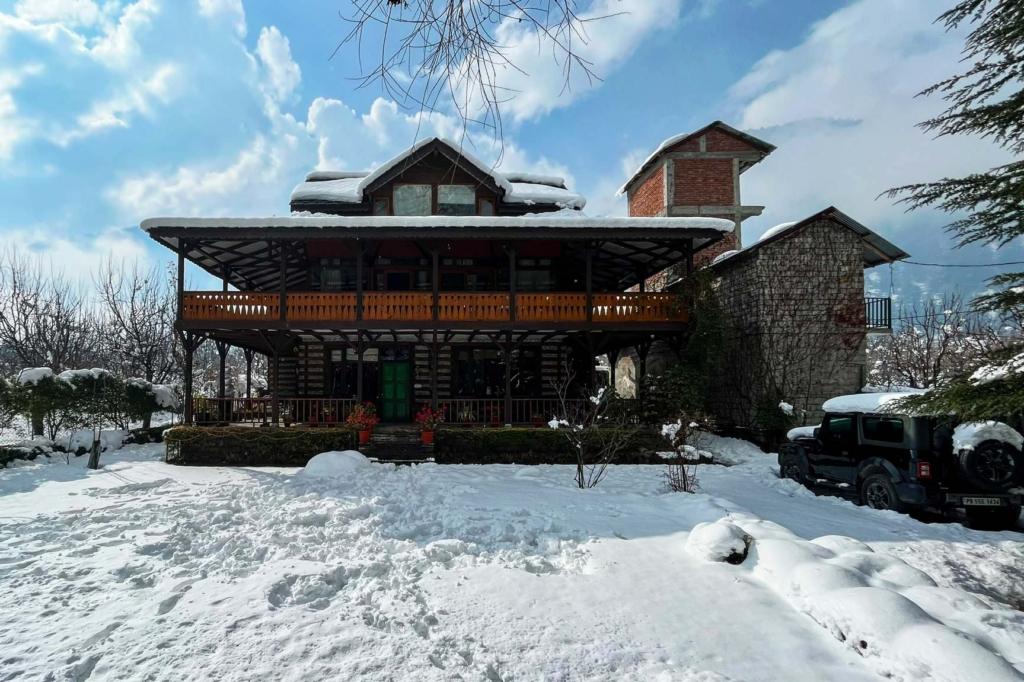

Safety, etiquette, and responsible ropeway travel
- Check weather: Ropeways in India depend on stable conditions. If the forecast predicts strong winds, fog, or storms, operators may suspend service. Always confirm the day’s operating status.
- Arrive early: Peak tourist months see queues. Arriving early morning reduces wait time and gives cleaner air for photos.
- Follow operator guidance: Instructions for boarding, baggage, and cabin conduct exist for safety – follow them strictly.
- Pack light for the cabin: Large backpacks block views and space; if you have bulky gear, check what the operator allows or stow it at the station.
- Respect local sites: Many ropeways in India serve religious or protected areas. Dress respectfully and avoid littering near stations and viewpoints.
When to plan your ropeway itinerary
- Winter (Dec–Feb): Best for snow-country ropeways (Solang, Auli) – crisp light, snow-lined peaks. Expect cold and occasional closures after heavy snowfall.
- Spring (Mar–May): One of the best windows for clear skies across the Himalaya and Sikkim; lower-altitude ropes (Timber Trail, Rajgir) are especially pleasant.
- Monsoon (Jun–Sep): Avoid high-altitude ropeways in India where visibility and landslide risk are concerns; lower, resort-oriented ropes can still operate but check local advisories.
- Autumn (Oct–Nov): Another great photography window – clean air, vivid colours, and steady operation schedules.
Photography tips for ropeway riders
- Use a small, fast camera or phone with stabilisation – cabins can sway slightly.
- Shoot through open windows if available; if not, clean glass and position close to the cabin frame to avoid reflections.
- For mountain vistas, bracket exposures or use HDR settings to retain snow and sky details.
- Capture the approach and disembark moments – they tell the story of the ride as well as the aerial view.
The Near-future: Ropeways beyond 2025
Beyond the ropeways in India listed above, India is seeing larger projects aimed at improving pilgrimage access and tourist connectivity. Major projects in the Himalayan corridor – notably planned links that will dramatically cut travel times to high-traffic destinations – were underway or announced in 2024–25, reflecting the sector’s rapid growth. These developments will make aerial transit an increasingly common part of mountain travel itineraries, so keep an eye on official project pages if you plan trips tied to new links. (For example, large-scale projects connecting pilgrimage routes have been reported in national news)
Which ride to pick?
- If you want alpine drama and skiing views: Auli. The long span and high-altitude panorama make it unforgettable.
- If you want a classic Himalayan gondola with adventure options nearby: Solang (Manali). Pair the ride with snow sports or paragliding.
- If you want heritage with an aerial twist: Rajgir. It’s quick, cultural, and photogenic at the stupa.
- If you want a resort-linked, comfort-first aerial ride: Timber Trail (Parwanoo) blends boutique stays with a scenic shuttle.
- If you want a quieter Himalayan viewpoint: Pelling offers clean vistas and local attractions on a smaller scale.
Every ropeway has its own character: some are engineering spectacles, others are gentle lifts into landscape or culture. In 2025, traveling by ropeways in India is both practical and photogenic – and an easy way to add altitude, perspective, and a memorable ride to a mountain trip.
Banner Image Credit: Vivek_Renukaprasad via istockphoto





